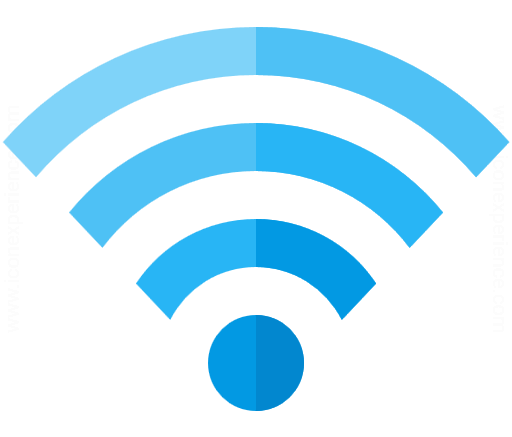It’s hard to overestimate the impact Wi-Fi has on our daily lives. It connects smart home devices, lets people use the internet anywhere in the house, and is so common that it’s unusual when a public place doesn’t have it. It only makes sense, then, that you’d want the latest version.
The Wi-Fi Alliance first announced Wi-Fi 6 in 2018 and the technology premiered the next year. Now that tech companies have had time to implement the standard, users may see it on more products. Should users likewise switch to this new technology?
What Is Wi-Fi 6?
First, it helps to understand what Wi-Fi 6 is. As its name implies, it’s the sixth version of the wireless communication protocol we all know and love. It brings more than just a name change, though.
Most notably, Wi-Fi 6 is considerably faster than most networks today. It operates at 9.6 Gbps, or almost triple Wi-Fi 5’s 3.5 Gbps. While most internet connections can’t reach that theoretical peak, such a high ceiling leaves room to support more devices. More speed overall means each individual device can experience faster connections.
These new Wi-Fi networks also offer more security. A new security protocol called WPA3 offers advanced encryption to help keep network activity private. While Wi-Fi 5 supports WPA3, it’s optional – whereas devices must support WPA3 to receive Wi-Fi 6 certification.
Wi-Fi 6 also has a feature called Target Wake Time (TWT) that improves battery life. TWT lets devices and routers schedule check-in times so they don’t need continuous connections. As a result, they power their antennas for less time and use less electricity. While this doesn’t apply to constant connections like laptops and phones, smaller smart home gadgets will last longer.
While Wi-Fi 6’s speed helps improve multiple device support, how it shares bandwidth improves it further. Wi-Fi 5 introduced multiuser multiple input multiple output – MU-MIMO – which lets routers split bandwidth into four streams. Wi-Fi 6 upgrades MU-MIMO, letting it split into eight streams and balancing connections between more devices.
How Can You Get Wi-Fi 6?
Faster speeds, more bandwidth, better security, and longer battery life are tempting offers. These benefits don’t automatically come to Wi-Fi networks, though. They require new technologies, so users must buy Wi-Fi 6-capable devices to use these new networks.
Since Wi-Fi 6 rolled out in 2019, devices that support this technology are already available and they’ll become increasingly common over time. Phones like the iPhone 11 and beyond and Samsung Galaxy phones after the S10 can take full advantage of these networks. Before long, most new devices that users can buy will come with Wi-Fi 6 support.
Should You Switch to Wi-Fi 6?
Wi-Fi 6 brings some impressive upgrades, though users won’t experience them fully without switching their devices for newer models. Given that expense and inconvenience, changing all smart home devices for Wi-Fi 6-capable versions immediately is unnecessary. However, as users look to replace aging gadgets or expand their smart homes, they should get Wi-Fi 6 devices.
The best option is to replace routers first. Switching to a Wi-Fi 6-supporting router will make the most noticeable difference, as it’ll improve bandwidth despite other devices not supporting Wi-Fi 6. So, if users’ routers are a few years old, they should consider swapping them for a Wi-Fi 6 one.
After that, the upgrade process can be gradual. Wi-Fi 6 devices will become the norm before long, so – as people buy new gadgets – they’ll experience these networks’ benefits more fully.
Make the Most of Your Smart Home
Fast, secure connections are crucial for smart homes. Wi-Fi 6 will make home wireless networks far better-suited for smart homes, bringing needed security and bandwidth upgrades. Switching routers now and slowly replacing other devices will help make the most of these technologies.





